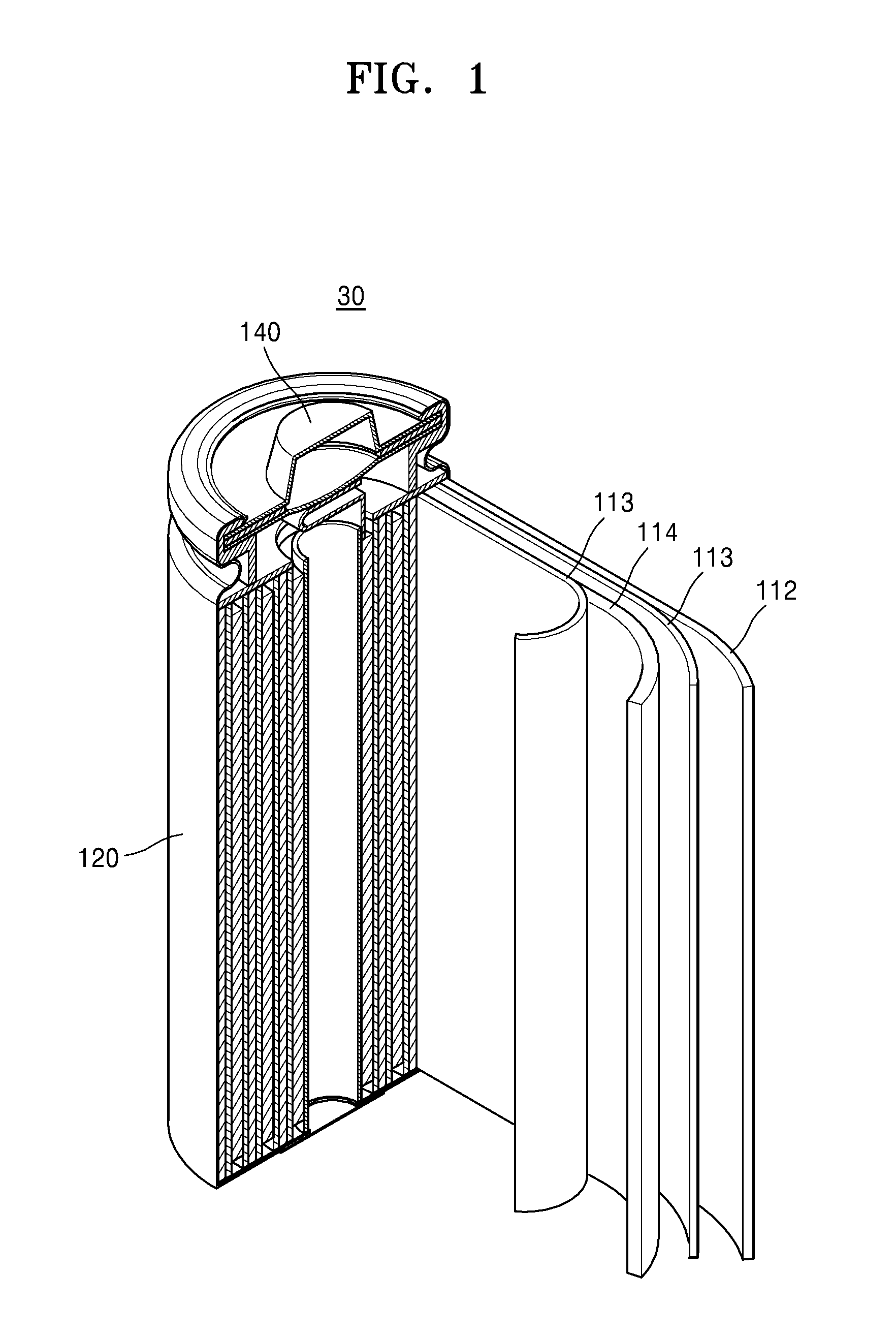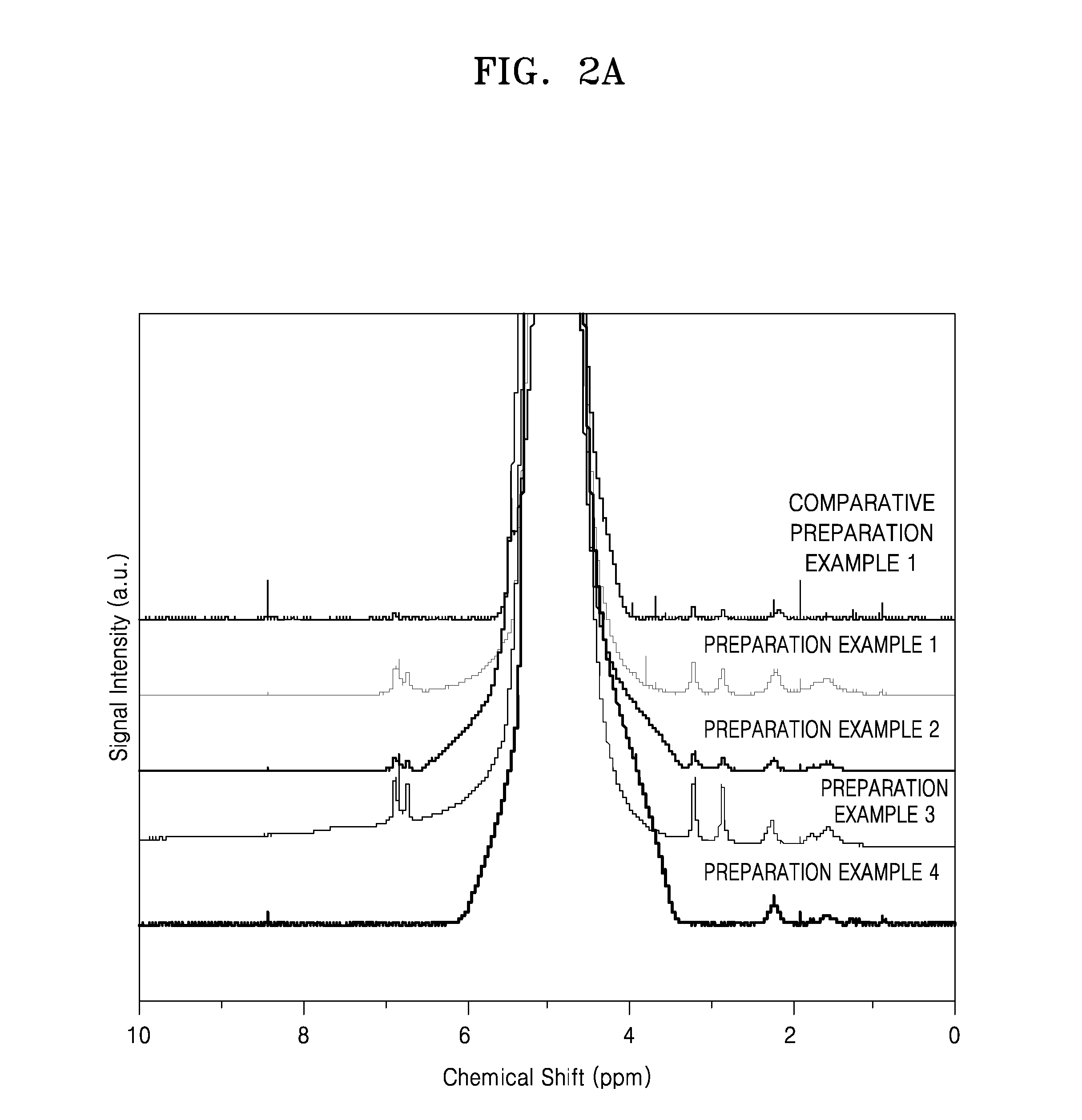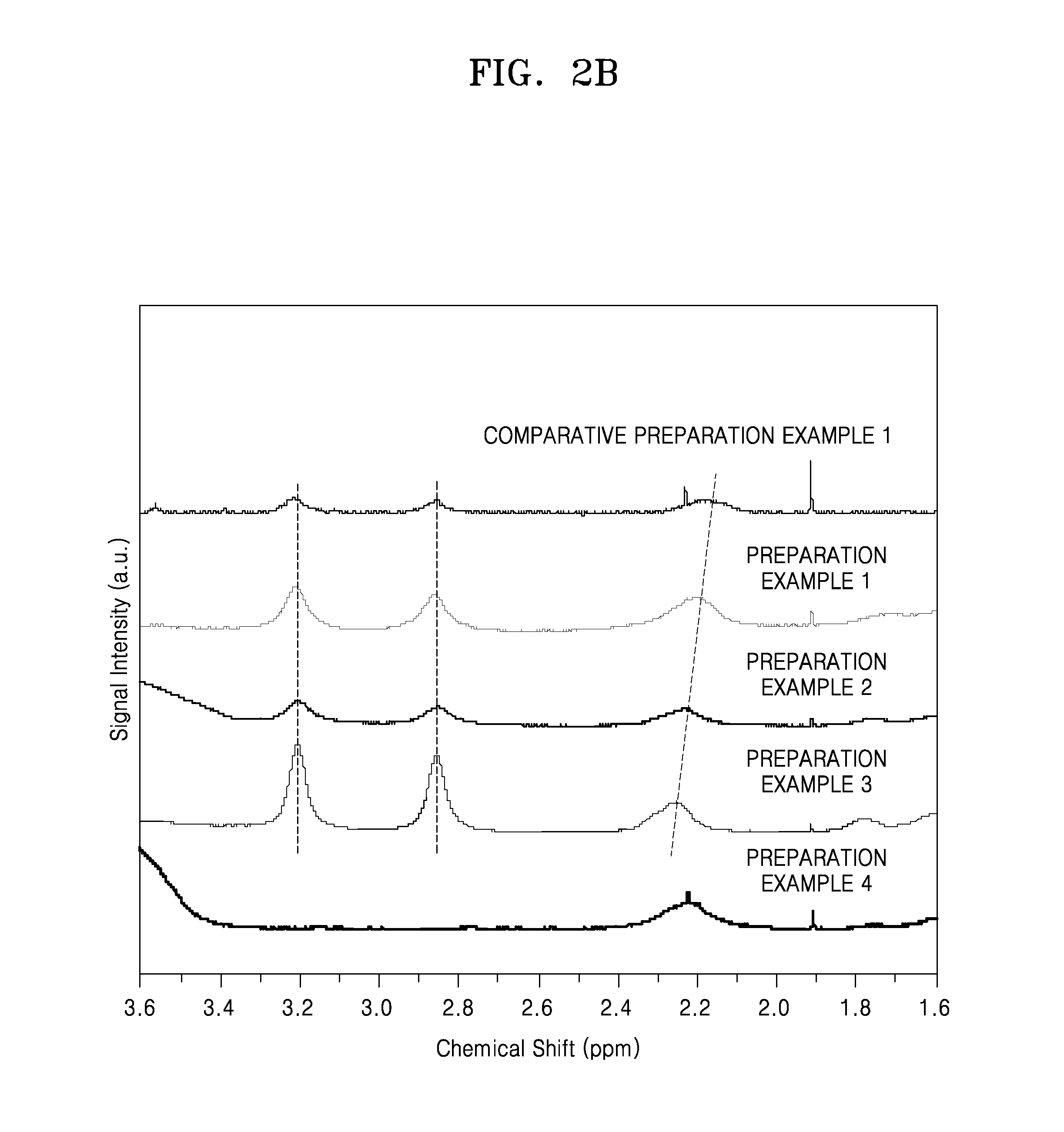Polymer, binder and negative electrode including the polymer, and lithium battery including the negative electrode
- Summary
- Abstract
- Description
- Claims
- Application Information
AI Technical Summary
Benefits of technology
Problems solved by technology
Method used
Image
Examples
example
Preparation of Polymer Containing Binder
Preparation Example 1
Preparation of Polymer Containing Binder
[0165]0.170 grams (g) of LiOH anhydride was dissolved in 199 g of deionized water to prepare a LiOH solution, and 1 g of a polymer, i.e., polyacrylic acid (PAA) (Mv: 1,250,000, available from Aldrich company), was added to the LiOH solution so as to prepare a lithium ion substituted PAA solution (Li-0.5-PAA) wherein a degree of substitution (DS) with a lithium ion in the PAA was 0.5. That is, the DS in the lithium ion substituted PAA solution (Li-0.5-PAA) refers to 0.5 molar equivalents of carboxyl groups that have been substituted with lithium ions based on 1 molar equivalent of total carboxyl groups that may be substituted with lithium ions in the polymer. 1.317 g of 3,4-dihydroxyphenylamine (DOPA) hydrochloride at a ratio of 0.5 molar equivalents based on 1 molar equivalent of carboxyl groups in the lithium ion substituted PAA was added to the lithium ion substituted PAA solution ...
preparation example 2
Preparation of Polymer Containing Binder
[0167]0.204 g of LiOH anhydride was dissolved in 199 g of deionized water to prepare a LiOH solution, and 1 g of a polymer, i.e., polyacrylic acid (PAA) (Mv: 1,250,000, available from Aldrich company), was added to the LiOH solution so as to prepare a lithium ion substituted PAA solution (Li-0.6-PAA) wherein a DS with a lithium ion in the PAA was 0.6. That is, the DS in the lithium ion substituted PAA solution (Li-0.6-PAA) refers to 0.6 molar equivalents of carboxyl groups that have been substituted with lithium ions based on 1 molar equivalent of total carboxyl groups that may be substituted with lithium ions in the polymer. 1.052 g of 3,4-dihydroxyphenylamine hydrochloride at a ratio of 0.4 molar equivalents based on 1 molar equivalent of carboxyl groups in the lithium ion substituted PAA was added to the lithium ion substituted PAA solution (Li-0.6-PAA) therein so as to prepare a mixture, and the mixture was stirred. Then, 49.15 g of deioni...
preparation example 3
Preparation of Polymer Containing Binder
[0169]0.237 g of LiOH anhydride was dissolved in 199 g of deionized water to prepare a LiOH solution, and 1 g of a polymer, i.e., polyacrylic acid (PAA) (Mv: 1,250,000, available from Aldrich company), was added to the LiOH solution so as to prepare a lithium ion substituted PAA solution (Li-0.7-PAA) wherein a DS with a lithium ion in the PAA was 0.7. That is, the DS in the lithium ion substituted PAA solution (Li-0.7-PAA) refers to 0.7 molar equivalents of carboxyl groups that have been substituted with lithium ions based on 1 molar equivalent of total carboxyl groups that may be substituted with lithium ions in the polymer. 0.789 g of 3,4-dihydroxyphenylamine hydrochloride at a ratio of 0.3 molar equivalents based on 1 molar equivalent of carboxyl groups in the lithium ion substituted PAA was added to the lithium ion substituted PAA solution (Li-0.7-PAA) therein so as to prepare a mixture, and the mixture was stirred. Then, 20.67 g of deion...
PUM
| Property | Measurement | Unit |
|---|---|---|
| Percent by mass | aaaaa | aaaaa |
| Percent by mass | aaaaa | aaaaa |
| Percent by mass | aaaaa | aaaaa |
Abstract
Description
Claims
Application Information
 Login to View More
Login to View More - R&D
- Intellectual Property
- Life Sciences
- Materials
- Tech Scout
- Unparalleled Data Quality
- Higher Quality Content
- 60% Fewer Hallucinations
Browse by: Latest US Patents, China's latest patents, Technical Efficacy Thesaurus, Application Domain, Technology Topic, Popular Technical Reports.
© 2025 PatSnap. All rights reserved.Legal|Privacy policy|Modern Slavery Act Transparency Statement|Sitemap|About US| Contact US: help@patsnap.com



